Picture this: You're a construction worker, huddled under the drizzling rain, precariously balancing while trying to complete your tasks in wet, uncomfortable gear. We all know rain can be quite unpredictable but dealing with the elements shouldn't be a strenuous battle. A valuable asset in this fight against weather elements is durable rain gear. It not only protects you but radically improves productivity and keeps your efforts steadfast, regardless of the weather. In this article, we're going to peel back the layers and unveil the secret behind durable rain gear for construction workers. So grab your cup of coffee, sit back, and let's embark on this illuminating journey into the world of high-performance rain gear.
The Growing Rain Gear Market
From hardcore hikers braving the elements to city dwellers dodging downpours, the demand for high-quality rain gear has been steadily increasing. Modern consumers not only seek rain protection, but also long-lasting durability, stylish design, and extra comfort features. This heightened demand is fostering significant growth in the rain gear market, which is expected to grow at an impressive 5.9% Compound Annual Growth Rate from 2023 to 2031, reaching a remarkable value of US$2.2 billion. Interestingly, this rise isn't confined to a particular geographic location or demographic, but is being observed worldwide.
In fact, the global market for raincoats and rain jackets alone, a significant segment of the larger rain gear market, is anticipated to experience significant growth between 2023 and 2030. This surge can be attributed to an array of reasons, ranging from changing weather patterns to evolving fashion trends.
Changing weather patterns across the globe have resulted in increased rainfall in certain regions, leading to a surging demand for rain gear. Even in regions with less rainfall, people are gearing up for unpredictable weather by investing in durable, reliable, and quality rain gear products.
Moreover, rain gear is no longer viewed merely as a practical necessity, it has also turned into a fashion statement. Raincoats and jackets, in particular, have seen startling advancements in design aesthetics, with manufacturers constantly reimagining their products to cater to the fashion-conscious consumers of the 21st century.
One such brand making strides with their design innovations in the Durable Rain Gear Market is Raingear Pro. They have successfully introduced trendy and innovative products that couple stylish design with effective rain protection, catering to the market's growing demand effortlessly.
To sum it up, the rain gear market is witnessing remarkable growth, driven by a combination of environmental changes and evolving consumer preferences. As market players continue to innovate and meet these growing demands, we should expect to see the market continue to expand into the foreseeable future. From climate-conscious adaptation to fashion-forward indulgence, rain gear has confidently secured its position in today's consumer market, and, judging by these trends, it certainly doesn't show any signs of slowing down.
Innovative Options in Rain Gear
The evolution of rain gear is shaped by technology. Innovative solutions are raising the bar in terms of protection and comfort for consumers across various sectors. The year 2023 has indeed taken rain gear to the next level—a leap characterized by such groundbreaking inventions as waterproof Bluetooth-enabled jackets and breathable rain pants.
Waterproof Bluetooth-enabled Jackets
It's no secret that staying dry and comfortable while it pours can be a real challenge, especially for those in the construction field. However, the introduction of waterproof Bluetooth Enabled Jackets is a game-changer. Designed with dual functionality, these jackets not only provide maximum rain protection but also ensure that you stay connected by incorporating Bluetooth technology. Imagine streaming music, making phone calls, or listening to important podcasts without the hassle of managing device cables or risk wetting your device!
Here are some of the standout features of these jackets:
- Built-in hands-free headphone system
- Water-resistant device pocket
- Quick-dry material for added comfort
- Extended battery life
This harmonious blend of technology and functionality creates an unprecedented experience for users, reimagining the typical rain jacket into something much more versatile.
Breathable Rain Pants
Rounding off this innovative duo is the introduction of breathable rain pants. While traditional rain gear can often be uncomfortable and stuffy, new innovations in fabric technology have led to the creation of rain gear that can withstand harsh weather without compromising comfort.
The features of breathable rain pants include:
- Waterproof yet ventilated material
- Comfort-fit design with adjustable straps
- Durable tear-resistant fabric
- Lightweight and flexible
Unlike their predecessor models, these rain pants don't force the wearer to choose between staying dry and being comfortable. This significantly improves productivity and overall morale, especially for professionals such as construction workers who frequently endure harsh weather conditions.
For more on these innovative options and others like them, be sure to check out the page on Innovative Technologies in Rain Gear.
Durability Testing of Rain Jackets
Are you used to the sudden showers that nature occasionally throws your way, or perhaps planning a trek to a rain-heavy location? Regardless of the scenario, a reliable rain jacket can make a world of attraction in keeping you dry and cozy. But how do you choose the best from the countless options flooding the market? Well, step in durability testing — a rigorous process that puts rain jackets to the test, determining their resistance to wear and tear and how well they can ward off precipitation.
Durability testing of rain jackets involves a comprehensive assessment of various factors that directly impact a jacket's endurance. Here's what it entails:
- Material Integrity: This evaluates the textile's overall strength and its resistance to frequent use and harsh conditions.
- Waterproofing Efficiency: After the first wear, does the jacket still keep water out? The testing process checks the consistency of this crucial feature.
- Seam Strength: By assessing the areas where the material is stitched together, testers can determine if a jacket can withstand being stretched or pulled without tearing.
- Zipper Durability: Since zippers are commonly the first to go in a jacket, this test is critical.
The goal of these tests is to ensure that you, the end user, get the most durable product, capable of keeping up with your adventurous spirit. More than the testing, it is the overall journey of analyzing rain jackets that culminates into a satisfying learning experience. Picture this; over the last 14 years, more than 205 rain jackets and hardshell jackets have been put through rigorous testing! This level of dedication ensures that the jackets you come cross on your shopping sprees are truly up to the mark.
There you have it. An in-depth understanding of what goes into making a rain jacket sturdy and reliable. So the next time you check out jackets, you can have a pretty clear picture of what you're investing in. Understanding the intricate science involved in the creation of these jackets shows how choosing the right protective clothing is far from being just about preference and style; it holds within it a tale of trials, validations, and unwavering commitments to quality.
New Technologies in Rain Gear
Rain, as beautiful and life-giving as it may be, has an uncanny tendency to catch us off-guard, often leading to soaked clothes and dampened spirits. Thankfully, technological advancements have given birth to an array of innovative solutions to conquer this vexing problem. From waterproof and breathable fabrics to seam sealing techniques and water-repellent coatings, the landscape of rain gear is becoming technologically savvy. Modern-day manufacturers are constantly exploring new materials and technologies, all with the goal of enhancing the performance and durability of raincoats.
Waterproof and Breathable Fabrics
Contrary to what one might believe, staying dry in rainy weather isn't just about stopping the water from reaching your skin; it's also crucial to allow sweat and moisture to escape from your clothing. Enter waterproof and breathable fabrics – the next generation textile technology taking the rain gear market by storm.
These high-tech textiles have integrated microporous membranes with extremely small pores, large enough for sweat molecules to escape, but small enough to prevent raindrops from seeping through. This balance between breathability and waterproofing offers not only protection against rain but also ensures wearer comfort by preventing the build-up of perspiration inside the garment.
Seam Sealing Techniques
While innovative fabric technology has drastically improved rain gear, let's not forget about an often overlooked but critical vulnerability - the seams. Now, with modern seam sealing techniques like taped seams and welded seams, those vulnerable spots are no longer an issue.
Taped seams involve applying waterproof tape to the stitches' inside, making them impermeable to water. Welded seams are a newer approach where heat is used to melt the fabric together, eliminating the need for stitches altogether. Each of these methods provides a robust solution to the age-old problem of leaky seams, ensuring complete waterproofing.
Water-repellent Coatings
Last, but certainly not least, are water-repellent coatings. These innovative coatings add an extra layer of defense by making water droplets bead and roll off fabric surfaces, rather than soaking in. Durable Water Repellent (DWR) is a common type of these coatings that lasts multiple washes and doesn't compromise on fabric breathability.
However, the innovation doesn't stop there. Some manufacturers are using hydrophobic nanotechnology coatings, which mimic the surface structure of lotus leaves, renowned for their extraordinary capability to repel water.
In final words, the latest technologies in rain gear have transformed the humble raincoat into a remarkable piece of functional and stylish gear. With the incorporation of waterproof breathable fabrics, seam protecting techniques, and water-repelling coatings, we're now better equipped than ever to brave the elements with confidence and stay dry in style.
Materials and Construction Techniques for Enhancing Durability
The backbone of any high-quality rain gear is undoubtedly its material and the construction techniques employed during its manufacture. This underlying foundation is what separates fleeting, inferior rain gear from durable, long-lasting protective clothing that can withstand the tests of time, weather, and tough working conditions. When it comes to choosing the appropriate rain gear, understanding these factors becomes fundamentally important.
Advanced Materials
The type of material used in creating rain jackets usually defines its durability, strength, and level of protection against the elements. Often built with 2, 2.5, or 3 layers, high-end jackets employ advanced materials that enhance these attributes. Notably, Gore-Tex and eVent membranes are adopted in the creation of such jackets due to their proven efficacy and remarkable performance.
Durable Water Repellent Technology
One of the innovative techniques to increase rain gear's durability is the application of Durable Water Repellent (DWR) technology. This technique aids in preventing saturation, enabling the water to bead up and roll off rather than seeping into the fabric. The application of DWR brings about improved resistance to moisture, thereby enhancing the longevity of your rain gear.
Seam-sealed Construction
Rain gear made with seam-sealed construction stands a greater chance at staying genuinely waterproof. This construction technique meticulously seals the seams, denying any entry points for water, thus ensuring that your clothing remains dry underneath no matter how heavy the downpour is.
Material Choices for Work Rain Gear
Work rain gear calls for materials that balance protection against the elements with the comfort and flexibility needed for physical work. Breathable nylon and polyester are widely popular in this regard, as they cater to these needs effectively. Polyurethane-coated rain gear provides a thinner and more lightweight option, enhancing maneuverability in work situations.
Meanwhile, woven polypropylene fabric earns praise for its durability and toughness, presenting a worthy choice for those who prioritize resilience over other factors. If you are more inclined towards water resistance, rubber rain gear, though hot and heavy, has made a name for itself in this regard.
The material and construction techniques of your rain gear play crucial roles in determining its durability and performance. Therefore, in the quest for the most durable rain gear, it is important to delve deeper beyond the surface as you make your choice. The page on Selecting Materials for Durability provides wider insights into these details, comprising in-depth knowledge that would assist the reader in making an informed choice. Remember, right choices are always a result of a sound understanding of the subject matter.
The Environmental Aspect
In today's era of increased environmental consciousness, making responsible decisions that consider the Earth's wellbeing is more important than ever. The choices we make every day, including what we wear, how we travel, and even the tools and equipment we buy, hold environmental implications. This particularly pertains to the sports and fitness industry, where the constant demand for new and improved gear can take its toll on our planet.
One of the ways to mitigate these impacts is by purchasing used gear instead of always buying new. While this concept may seem surprising, interestingly, it holds numerous benefits both for our environment and wallets.
Understanding the environmental impact of manufacturing new gear gives a clear picture of why used gear can be a more responsible choice. Each new product involves extraction of raw materials, energy consumption in production, and the addition of pollutants during manufacturing processes. This cycle repeats every time a new product is made, contributing to greenhouse gas emissions and depletion of natural resources.
In contrast, used gear already exists and requires no additional resources to produce. It merely changes hands from one user to another, reducing waste and saving resources. Key benefits of choosing used gear include:
- Reduced Waste: Rather than discarding used gear, reusing it prevents unnecessary waste and fills our landfills much slower.
- Saving Natural Resources: No additional raw materials are used when purchasing used gear, preserving natural resources.
- Less Energy Consumption: Since used gear doesn't have to be manufactured again, it consumes less energy.
"One person's trash is another person's treasure," goes the famous saying, and this sentiment rings true in the realm of used gear. Not only does it reduce each individual's carbon footprint and save natural resources, but it also fosters a conscious approach to consumption—making us all part of the solution rather than the problem.
Although choosing used gear might seem like a small step in the grand scheme of things, remember, every significant change begins with a small action. Thus, next time you need gear, consider the used alternatives available. They may not only save you money but also help make a meaningful contribution to preserving our beloved environment.
High-performance and Durable Outerwear for Construction Workers
When it comes to battling the elements on the job, construction workers require robust and reliable outerwear. Dealing with harsh weather conditions while maintaining efficiency at work calls for high-performance, durable gear. In the quest to provide construction workers with the best protective clothing, manufacturers, such as GORE-TEX, innovatively combine technology and fabric, to gear up these brave people against any weather adversity.
Among the top performers that have won favor in the industry are GORE-TEX products that come hand-in-hand with ePTFE membranes. These products have strategically positioned themselves at the forefront of the market due to their convincing triple threat: they are durable, waterproof, and breathable.
Here's how these super products shield against rain:
- Durability: Not only do they shield against the rain, but they also provide long-term service due to their unique resilient make-up.
- Waterproof: ePTFE membranes essentially make these GORE-TEX products impermeable, offering excellent protection against the rain.
- Breathable: Despite their waterproof feature, these products maintain excellent breathability, ensuring that workers don't have to compromise their comfort for protection.
Moreover, waterproof laminates give some of these products an extra edge against the competition. It elevates them from ‘just waterproof’ to being sturdy battle gear for construction workers while offering different constructions, including 2, 2.5, and 3 layers.
"The best rainwear goes unnoticed. It's so effective and comfortable that it feels like a second skin, allowing you to focus on the task at hand rather than the weather overhead." - Anonymous
Among the top choices, you might want to check out the list of Durable Rain Jackets for Construction, that offer exemplary protection against the harsher elements of the weather.
High-performance, sturdy outerwear for construction workers is not just an option but a necessity. It is not merely about staying dry but also feeling comfortable and safe while on the job. So when looking for the best protective clothing, remember - it should keep you dry, but also breathe with you.
Conclusion
The right rain gear choice is a critical element for construction workers not just for their comfort but also for their safety. Advances in technology have ushered in novel materials, designs, and construction techniques that have significantly enhanced the durability, breathability, and overall performance of rainwear. Adopting eco-friendly manufacturing practices, companies like Hurricane Raingear continue to keep the construction workers dry while staying dedicated to minimizing the environmental impact. Their products are an embodiment of the promise to offer uncompromising quality crafted with cutting-edge technology and discerning materials. It's clear that the blend of technology, performance, and sustainable practices reshape the rain gear landscape for the better, one raindrop at a time.
Frequently Asked Questions
-
What features should I look for in durable rain gear for construction workers?
When looking for durable rain gear for construction workers, key features to consider include waterproofness, breathability, durability, reinforced stitching, adjustable cuffs and hems, reflective details for visibility, and ample storage pockets.
-
Are there specific materials that are recommended for durable rain gear?
Yes, ideal materials for durable rain gear are ones that offer a high level of waterproofing, such as Gore-Tex or similar waterproof membranes. Additionally, polyester or nylon fabrics with a durable water repellent (DWR) coating can also provide excellent protection against the rain.
-
How often should I replace my rain gear for construction work?
The lifespan of rain gear depends on factors like frequency of use, intensity of work, and overall care. However, on average, it is recommended to replace rain gear every 2-3 years or sooner if you notice signs of wear and tear, such as leaks, faded color, or damaged zippers.
-
Can I wash my rain gear in a washing machine?
Yes, most rain gear can be machine washed. However, it's crucial to follow the manufacturer's instructions. Generally, using a gentle cycle and mild detergent, along with air drying, is recommended to preserve the integrity and waterproofing of the gear.
-
Are there any additional care tips to extend the lifespan of rain gear?
To prolong the durability of rain gear, it's advisable to avoid using fabric softeners, bleach, and harsh detergents. Regularly inspect and repair minor damages like loose threads or small tears. Store rain gear in a cool, dry place away from direct sunlight to prevent deterioration.



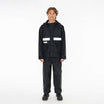
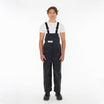
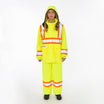
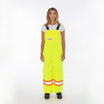
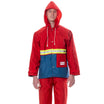
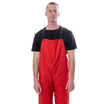
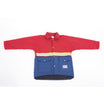
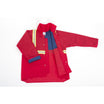
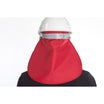

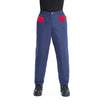
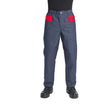
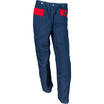
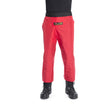
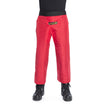
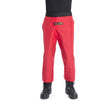
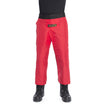
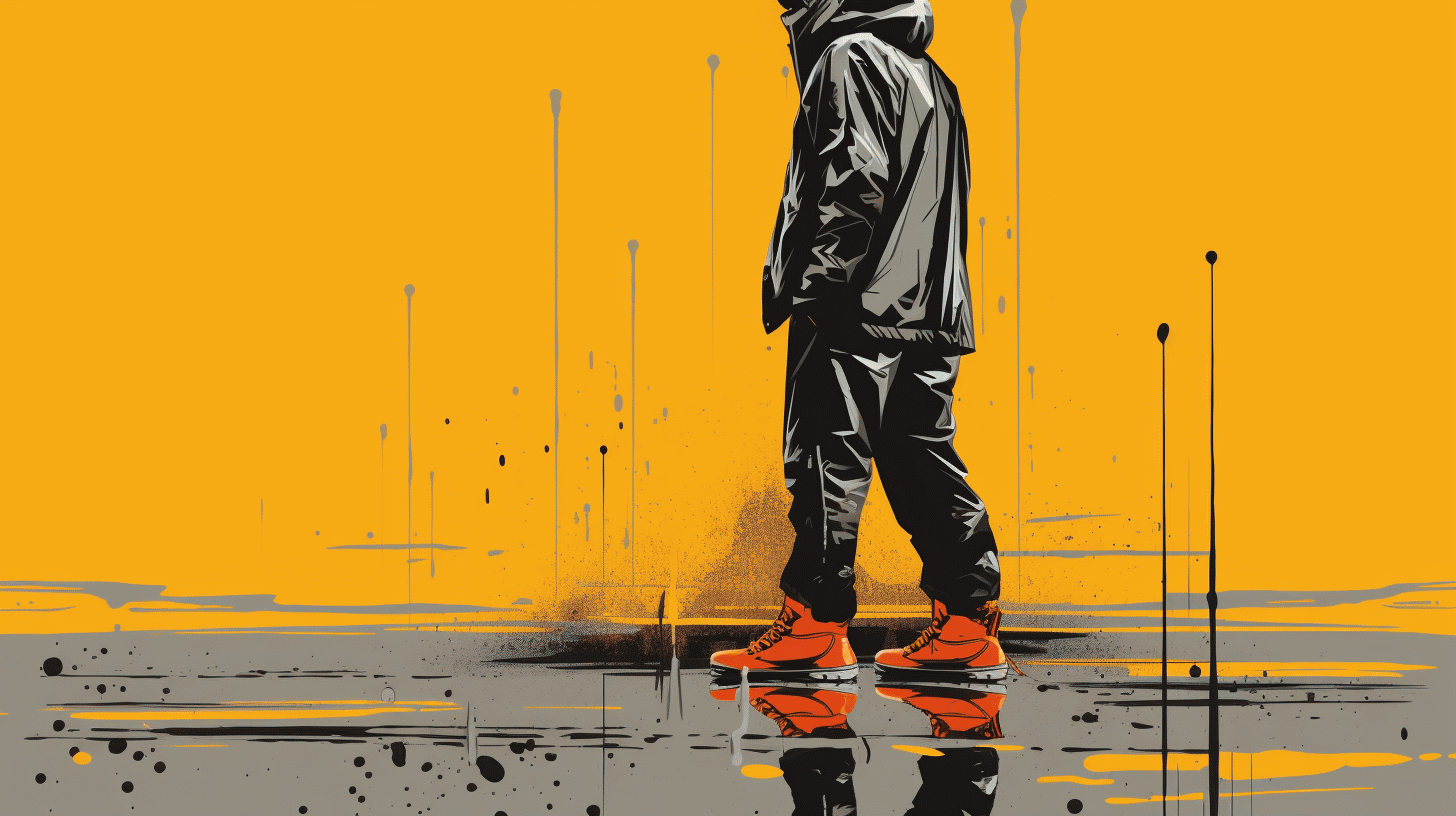

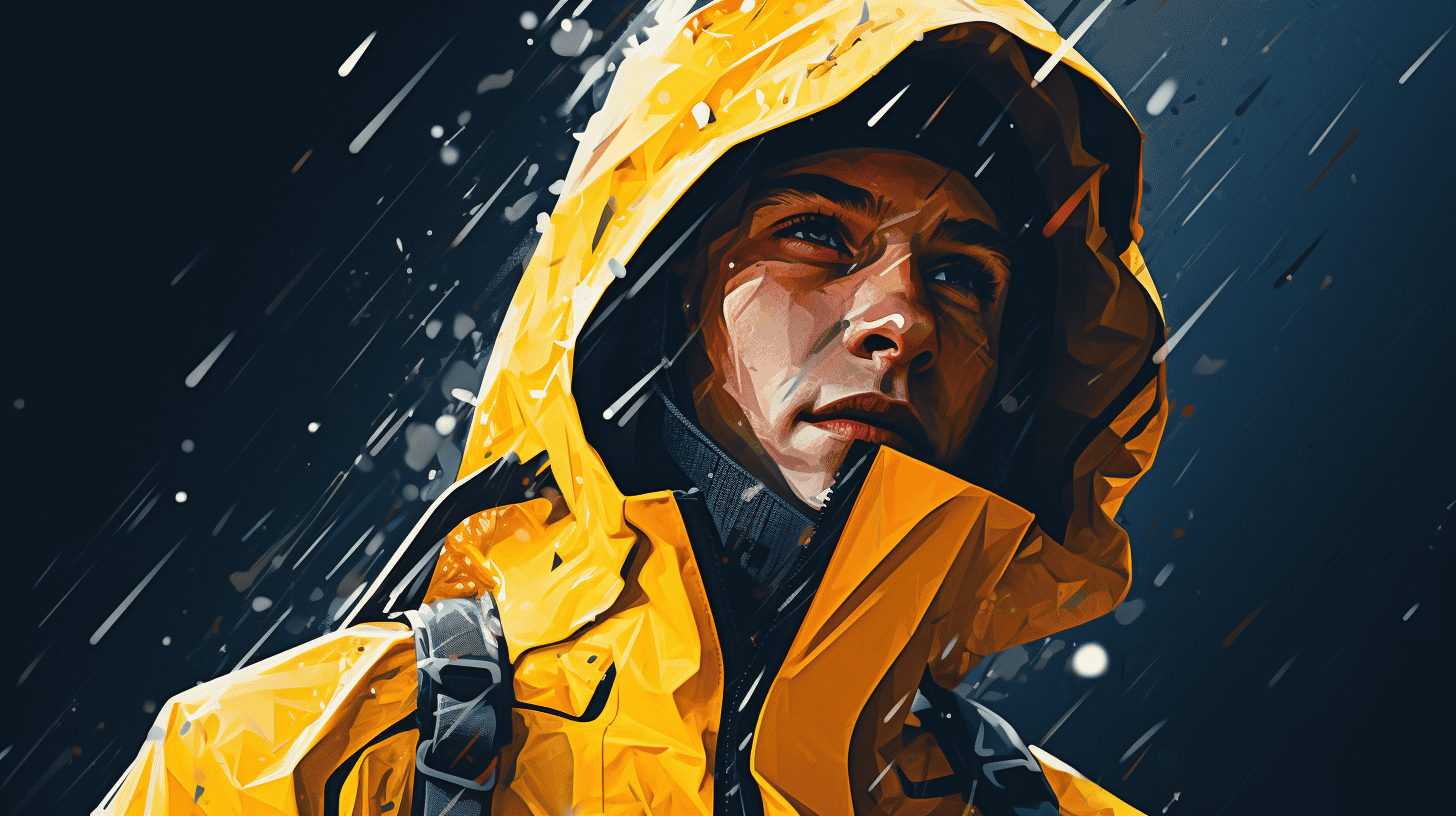
Leave a comment
This site is protected by hCaptcha and the hCaptcha Privacy Policy and Terms of Service apply.